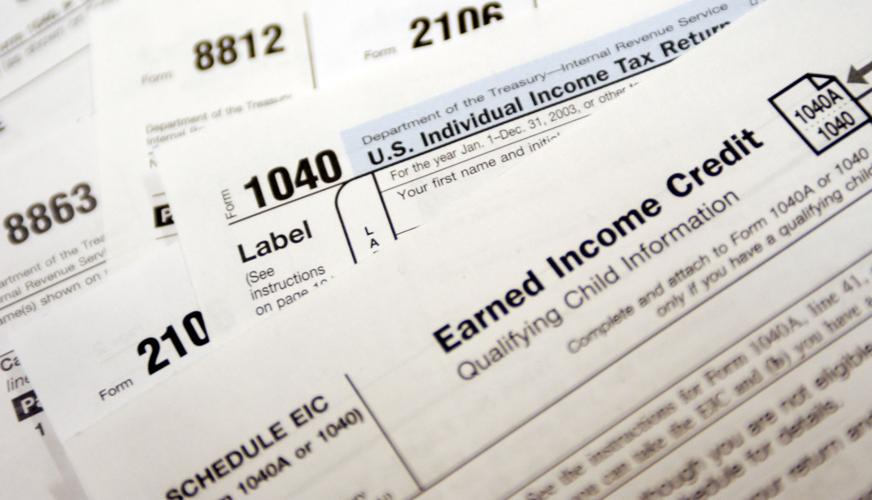PHOENIX — State revenue officials are hoping a new tax form and a public relations campaign will persuade more Arizonans to send them money after they buy items from out of state, whether online or on vacation.
The new fill-in-the-blanks form created by the Department of Revenue lets shoppers put in how much they spent and then compute what they owe the state by multiplying that by 5.6 percent. Paying the applicable city sales tax requires a few more steps.
But the bottom line is a belief that the state can get more money from residents.
Anyone who has purchased something at an Arizona store knows the retailer adds on all the appropriate state and local taxes. And even online sales from companies that have a physical presence in the state, like Walmart, Target and even Amazon, are supposed to include what is formally known as Arizona’s “transaction privilege tax.”
But shoppers who go online — or travel elsewhere — to buy everything from clothing to furniture and electronics are legally required to compute what they would have paid had they purchased the items in Arizona and send that off to the state every month.
How many do?
Department spokesman Ed Greenberg said Arizona collected $300 million last year in use tax. But more than 99 percent of that came from businesses that not only have a more formal process of reporting but also are subject to audits.
He has no figures for how many individuals are complying with the law. More to the point, Greenberg said he has no way of knowing how many Arizonans are not.
But the state is proceeding with the presumption that there are tax dollars out there from individual shoppers that are due the state.
“The intent of the form is to improve customer service for Arizonans using the use tax payment program,” he said, making it easier for consumers who want to comply with the law and for Department of Revenue officials to process.
And, of course, to improve compliance. Greenberg said it’s not just about the state generating more dollars.
“The use tax was instituted to protect Arizona sellers who otherwise would be at a competitive disadvantage when it comes to out-of-state sellers,” he said.
Consider a $300 camera.
If purchased in Arizona, the state tax alone would add $16.80 to the bill. And that doesn’t count local taxes which, at a rate of 2 percent, can add another $6 to the total price.
What the use tax does is require Arizonans who make those out-of-state purchases to effectively give up that price advantage by sending what they would have owed to the Department of Revenue had the purchase been made here.
But it’s more complex than that.
First, the use tax applies even to purchases made personally by consumers.
So someone who purchased a really neat wind chime while vacationing in Oregon, where there is no sales tax, would be required to pay the levy on returning home.
And to complicate matters, if the purchase is made in a state with a lower tax rate than Arizona — say Hawaii where the rate is 4 percent — the Arizona resident would owe a 1.6 percent balance, plus the local tax where he or she resides.
Even the slight difference between New Mexico’s 5.13 percent tax rate and what consumers would pay in Arizona triggers the legal requirement to file and pay.
Finally, there’s no minimum purchase that does not count. So, technically speaking, that $5 “We Visited Montana” mug triggers a mandate to send 28 cents to the state.
“It all circles back to the reason for the use tax being instituted,” Greenberg said. “That was to level the playing field as much as possible ... and protect Arizona sellers so they’re not at a competitive disadvantage.”
Greenberg said his agency is operating under the presumption that Arizonans are not purposely shorting the state.
“The Department of Revenue recognizes there are consumers who may not even realize they could be required to pay use tax on many of their out-of-state purchases,” he said. “Through this we’re hoping the consumers will become more aware that this voucher program is in place and be more aware of the use tax payment program.”
And in case anyone was wondering, there actually is a penalty for those who do not comply — assuming they’re caught.
There’s a potential late filing penalty of 4.5 percent of the tax required. And the Department of Revenue also can charge interest , up to a combined penalty equal to 25 percent of what should have been paid.
Greenberg said there are Arizonans who actually comply with the law now. But the problem is they’re simply sending in checks “with little or no paperwork.”
This isn’t the first time Arizona had made a bid to capture more use tax revenues.
In 2011, lawmakers approved a measure putting a line on income tax forms and requiring anyone with out-of-state purchases to calculate the amount and pay it.
Then-Rep. Jack Harper, R-Surprise, said the use tax mandate, which has been on the books since 1955, is all but invisible to individuals. He said putting a line on the tax form would make the obligation obvious.
“If somebody doesn’t know they’re supposed to report use tax, then they’re not cheating on their taxes,” he said at the time.
“If it’s a line on their (income) taxes, then they have to write that they don’t owe any use tax and think about it.”
The result was what then-House Majority Whip Debbie Lesko called a “public outcry” by constituents who saw the new line on the form as just another burden. So lawmakers voted to repeal the change the next year.





